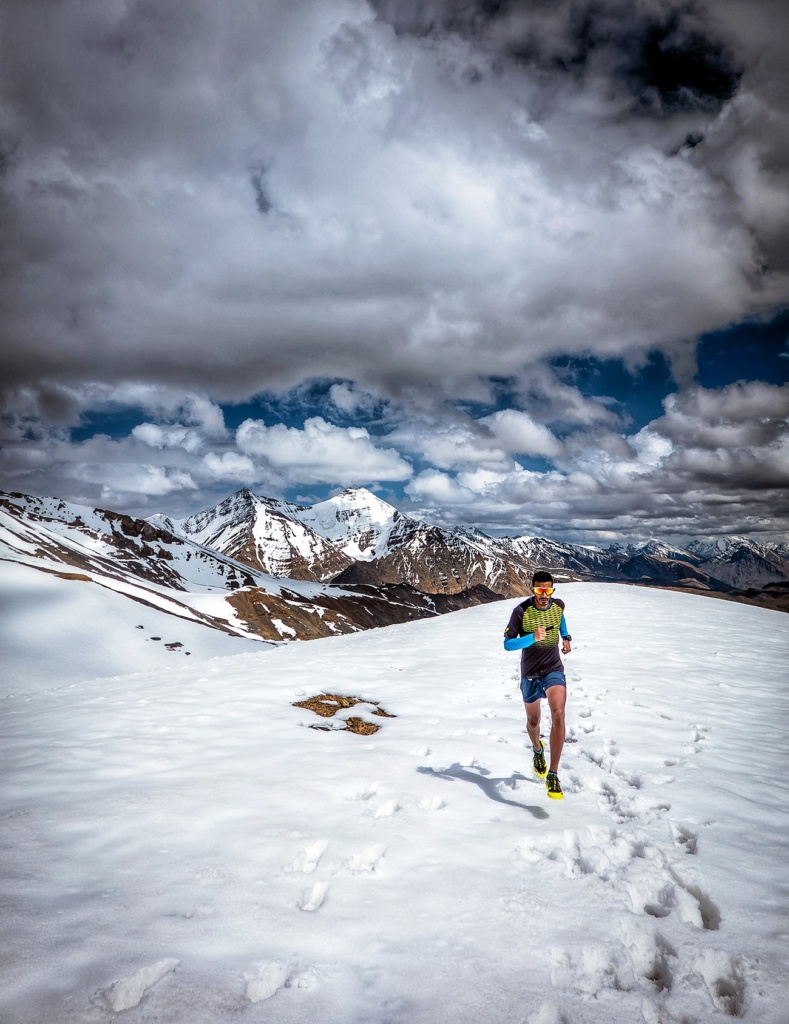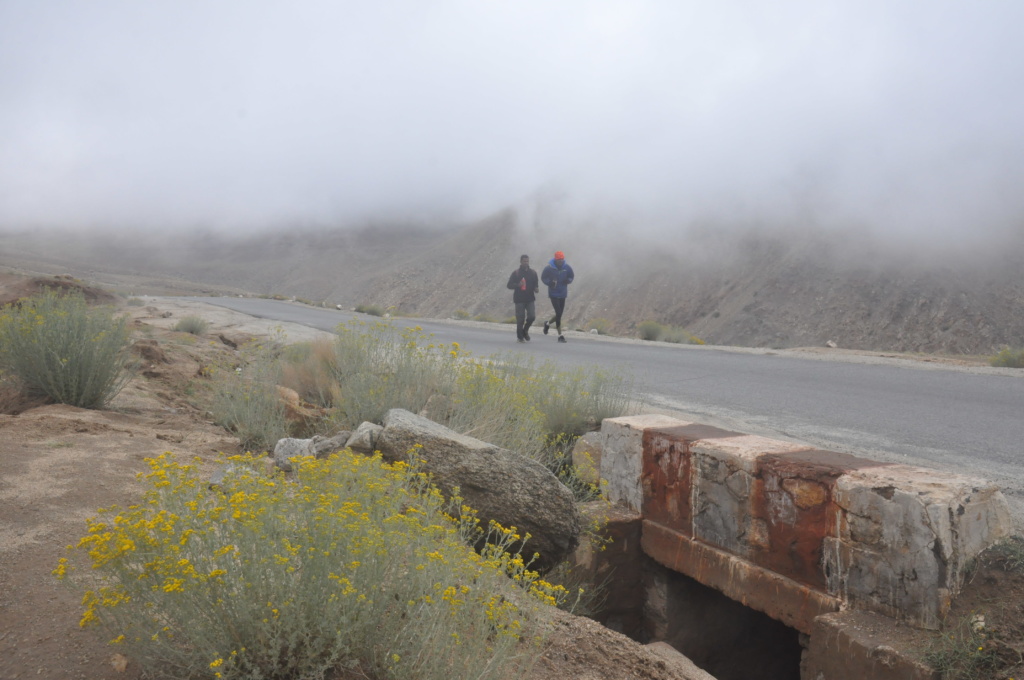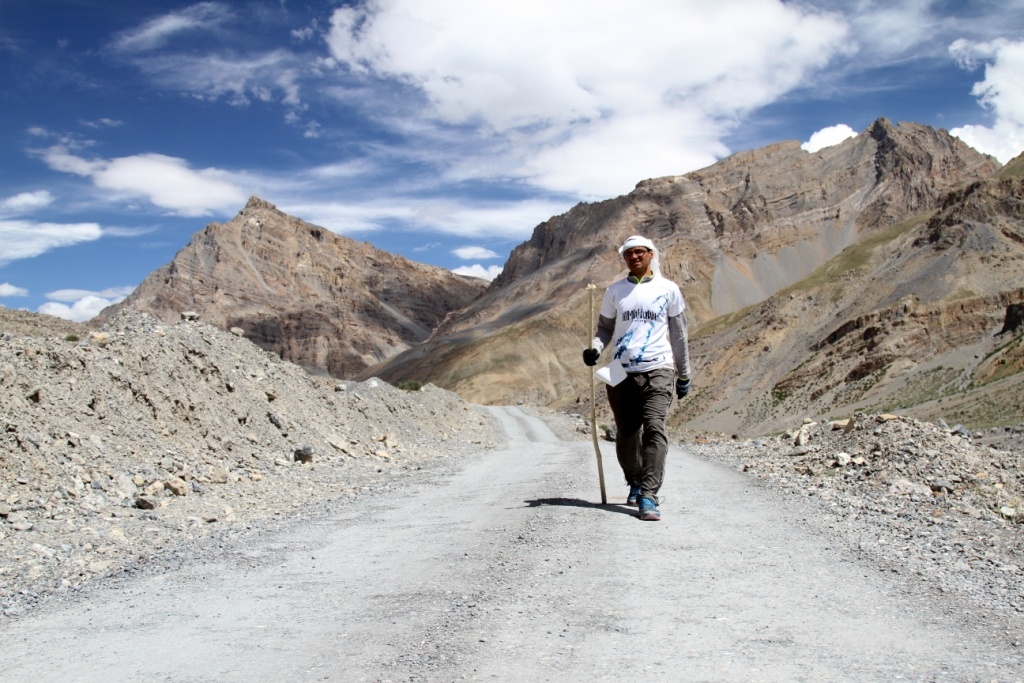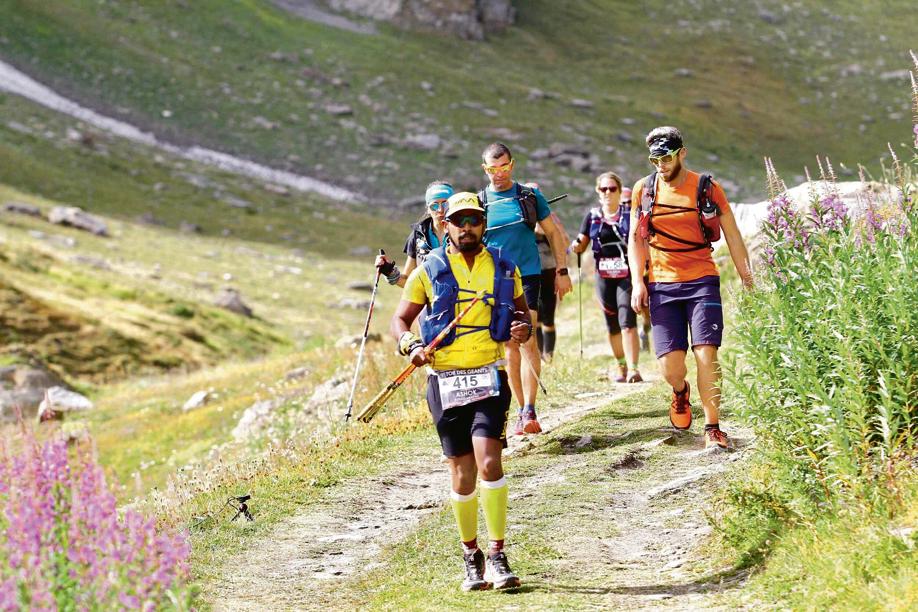The world of ultra running is seeing a steady growth in India

First published:
https://www.livemint.com/mint-lounge/features/ultra-running-in-india-going-the-distance-1565334096079.html
Ultra Running in India going the distance
Training for the distances, and at times the altitude, that ultra running presents comes with its own set of challenges.
Rajat Chauhan, a doctor specializing in sports-exercise medicine and osteopathy, doubles up as La Ultra’s race director. He believes a lot of Indians are trying to do too much too soon. “We don’t know how to do a 10km and want to graduate to bigger distances. Injuries are funny, because they don’t necessarily come after the first run only. Runners need to build a base, starting with learning to breathe right,” he says.
Dr Chauhan recommends a steady increase in distances and repetitions. Besides training, he considers energy intake and strength training critical aspects that receive little attention. “Running and strength training drills must happen in parallel. The whole idea is to work the muscles, because that’s what makes you move. Bad runners run from the knees, good runners from the hips,” he says.
“We also don’t know how to fuel the body, which must also be a part of the training rather than what is focused on only during the race,” he adds.

Kavitha Kanaparthi, founder of Globeracers, has come to realize that ultra runners in India are usually younger than she has seen around the world.
Last month, Globeracers introduced a paid training plan. “There’s a complete lack of understanding on what it’s going to do to them in the long term,” she says.
A few, like Kieren D’Souza and Shashwat Rao, moved to the mountains to work on the running. “Long training days in inhospitable conditions set me up for a finish during the Hell Ultra. I even did a recce of the route on a bicycle. Yet, a race of this magnitude can never go as per plan,” Rao says.
While preparing for the same race, Hungarian Szőnyi Ferenc carried out his acclimatization runs in Nepal and would tackle 40-60km and 3,000m climbs each day. Brijmohan “Breeze” Sharma would step out in May’s sweltering heat in Mumbai to gear up for the scorching climes of Death Valley in the US during the Badwater 135.
The ultra running segment is broadly divided into three categories by the IAU—100km, trail and 24-hour—which demand their own training. “I have been doing a lot of shorter trail races because I have realized the importance of speed. You cannot really work on a 100km and focus on speed at the same time,” D’Souza says.
Sharma, on the other hand, believes there is little one can do when it comes to gearing up for the long, lonely hours on the trail. “It’s really haunting after a point, when you don’t see another person for hours. Your mental strength comes in during these times,” he says.

While Anjali Saraogi runs marathons these days, her focus has been on the 100km distance. Most of her learning has been through trial and error, after researching tips from professionals. On the diet front, Saraogi wiped out processed food from her plate; Rao turned vegan after he realized it helped him recover faster.
“I try to experiment with everything from diet to the training plan. If it works, I incorporate it, else just stick to what’s worked for me,” says Saraogi.
Training for an Ultra
It was in 2012 that Kieren D’Souza ran his first ultra distance of 100km at the Bangalore Ultra marathon. Until then, the longest he had run was a half marathon (21.0975km). The challenge posed by races longer than the marathon distance of 42.195km hooked him and he decided to take on ultra running full time.
In the next few years, D’Souza moved to Manali to train at altitude—on the trails that climb above the mountain town in Himachal Pradesh (HP). Today, his focus is on international races—he has been part of the Indian team at the IAU (International Association of Ultrarunners) Trail World Championships for three years. Yet, despite seven years in the sport, he just about manages to sustain himself as a full-time runner, planning his funds and picking his races months in advance.
Despite the odds, runners such as D’Souza are now looking to leave a mark on international races. At the last IAU Asia & Oceania 24-hour Championships, held in Taipei City in December, Ullas Narayan bagged the country’s first podium position, finishing third. And alongside Sunil Sharma and L.L. Meena, he picked up another bronze after running a total distance of 644km in the team event.
The growing interest in the sport has drawn the IAU’s attention. Its officials were in Bengaluru last month to inspect facilities and consider hosting races in India next year. It’s a sign of the rapid progress the sport has made in just around a decade.
After marathon running took enthusiasts by storm in the early 2000s, the idea of longer endurance runs appealed to a few. One of the first races in the country was the Bangalore Ultra in November 2007, which offered distances over 26k, 52k, 78k and 104k. Ashok Daniel, who had lined up at the start of the 52k category of the same race in 2012, has gone on to run races in England, Scotland, Spain, Italy and France.

“The transition to ultra distances was quite gradual and I planned it out,” says Daniel. “I changed my running volume and trained my body to run on tired legs. The bigger changes were in nutrition and being able to eat and run. As with everything, the more you experiment, you learn through experiences—there’s no one size fits all.”
Over time, more races came up, and the distances kept increasing. La Ultra in Ladakh started out as a 222km race category in 2010 and introduced a 333km category in 2014, besides a 111km race for the rookies. As part of the 10th-anniversary celebration later this month, it is offering a mammoth 555km distance that seven runners have signed up for so far, in addition to a 55km category for those looking to make the leap to ultras.
“There has been a lot of learning over the years. We had to fine-tune the cut-offs, keeping in mind the exposure to altitude during the race, and so that runners don’t take it as a glorified trek. At the same time, we cannot be too far from Leh in case of an emergency. The race now starts at 6pm, so we can beat traffic on the Khardung La route. We have to be prepared for any eventuality, such as the time we had to change the course overnight due to an overflowing nullah,” says Chetan Sehgal, who has been associated with the race since 2013.
Similarly, the 338km Himalayan Crossing from Kaza to Rohtang Pass in HP, organized by Globeracers, started out as a five-day race but is now a single-stage race. A few of their races are also qualifiers for the Ultra-Trail du Mont-Blanc—a 170km race with an elevation gain of 10,000m—for those wanting to run internationally. “It’s essentially the pinnacle for any mountain runner. The course and competitiveness is unparalleled, which draws over 2,000 starters each year,” says Daniel.
During the early days, though, the few participants in these races were largely foreigners. It took until 2015 for an Indian, Pervez Malik, to finish the 111km race at La Ultra. The Hell Ultra, which started in 2016 and runs over 480km from Manali to Leh, had its first Indian finisher in Shashwat Rao only this year.
The increase in participation has led to the start of racing series such as the Hell Race Trail Series, which comprises six races that lead up to the finale in the Solang SkyUltra. Globeracers too will have a season-ending race in Meghalaya from this year.
“The idea is to get runners to understand what it takes to run a particular distance, say 50km, a few times and train well for it. It will eventually help them run a fast 50km, before they jump to bigger distances,” says Globeracers founder Kavitha Kanaparthi.
Financial support, though, is hard to come by. Brijmohan “Breeze” Sharma had to use his savings and take loans while attempting races such as Badwater 135, Brazil 135 and the Delirious W.E.S.T. Though D’Souza has a few sponsors, it allows him only three international races each year. Daniel, on the other hand, funds his passion through his practice as a lawyer in the Madras high court.
The Athletics Federation of India has only recently turned its attention towards ultra running and has found an ally in NEB Sports Entertainment, which funded the Indian team at the 24-hour and 100k World Championships.
Anjali Saraogi, who was handed the female ultra and trail runner of the year title for her performance at the 100k World Championships in Croatia last year, saw a different side of the sport in Europe. “The American and South African teams had physios and doctors accompanying them, besides reserve runners. We had one crew member and that too because he volunteered to come,” she says.
A few federations around the world that cater specifically to trail and ultra running are known to support their runners; the rest depend mostly on private sponsors. The IAU only offers a travel grant, besides sorting accommodation for two male and female athletes each.
“Despite the sport being relatively new, Indian runners have shown tremendous growth. The need of the hour is to conduct a national championship, which will bring the best talents from around the country in one place and allow athletes to enhance their knowledge and skill,” says Nadeem Khan, president of IAU.
Later this month, they will take a decision on awarding India two races.
D’Souza believes this would be the perfect fillip for the sport, especially at a time when a few Indian runners have shown improved timings through training.
“Two years ago, people were getting close to 180km in 24 hours; now they are crossing 200km. Similarly, we didn’t have anyone who had done 100km in less than 10 hours, now some do it in 8.5 hours,” says D’Souza.
“When it comes to ultra running in India, we are in a little bubble. A lot of people will be exposed to global standards if the race comes down,” he says. For the sport, that would ultimately prove to be a good thing.